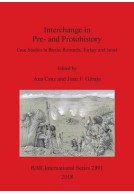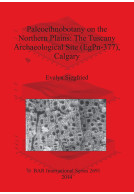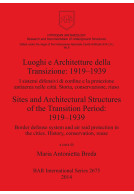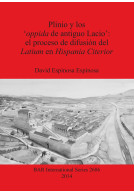Google Books previews are unavailable because you have chosen to turn off third party cookies for enhanced content. Visit our cookies page to review your cookie settings.
El Paisaje del Valle del Ason (Cantabria) a Finales del Tardiglaciar: Un Modelo Predictivo de Vegetacion Arborea Mediante Sig: Landscape in the Ason ... Archaeological Reports International Series) (Paperback)
Imprint: British Archaeological Reports
Pages: 84
Illustrations: b/w illus
ISBN: 9781407313870
Published: 31st July 2015
Script Academic & Professional
Pages: 84
Illustrations: b/w illus
ISBN: 9781407313870
Published: 31st July 2015
Script Academic & Professional
You'll be £10.00 closer to your next £10.00 credit when you purchase El Paisaje del Valle del Ason (Cantabria) a Finales del Tardiglaciar: Un Modelo Predictivo de Vegetacion Arborea Mediante Sig: Landscape in the Ason ... Archaeological Reports International Series). What's this?
+£4.99 UK Delivery or free UK delivery if order is over £40
(click here for international delivery rates)
Order within the next 5 hours, 31 minutes to get your order processed the next working day!
Need a currency converter? Check XE.com for live rates
(click here for international delivery rates)
Order within the next 5 hours, 31 minutes to get your order processed the next working day!
Need a currency converter? Check XE.com for live rates
The end of the Pleistocene in the Cantabrian Region (northern Iberia) witnesses a series of major environmental, social and cultural changes. From a climatic and environmental point of view, the Lateglacial is characterized by a high instability, and broadly means the transition from glacial to warmer and milder conditions. This transition implies the development of deciduous forests, mainly oakwoods and Atlantic mixed forests, which displaced the pine forests dominant during the Würm glaciation. The continual substitution of conifers by deciduous forests might have had an influence on the changes in the economy and the social organization of Late Palaeolithic societies.
In this work, changes in the landscape of the Asón river valley (Cantabria) during the Lateglacial are analysed. To do this, a GIS-based predictive model for the potential distribution of tree vegetation was developed. This model, based on the ecological requirements of the main taxa identified in pollen diagrams from the region, estimates the areas where each species could have had higher probabilities to develop.
The results obtained allow verifying an important change in the spatial distribution of the main forest types during the Lateglacial and the early Holocene. This change in the landscape, and therefore in the distribution of the resources related to deciduous forests, might have had an influenced in the changes observed in the subsistence strategies and the settlement patterns of Upper Magdalenian and Azilian hunter and gatherer communities.
Other titles in British Archaeological Reports...















